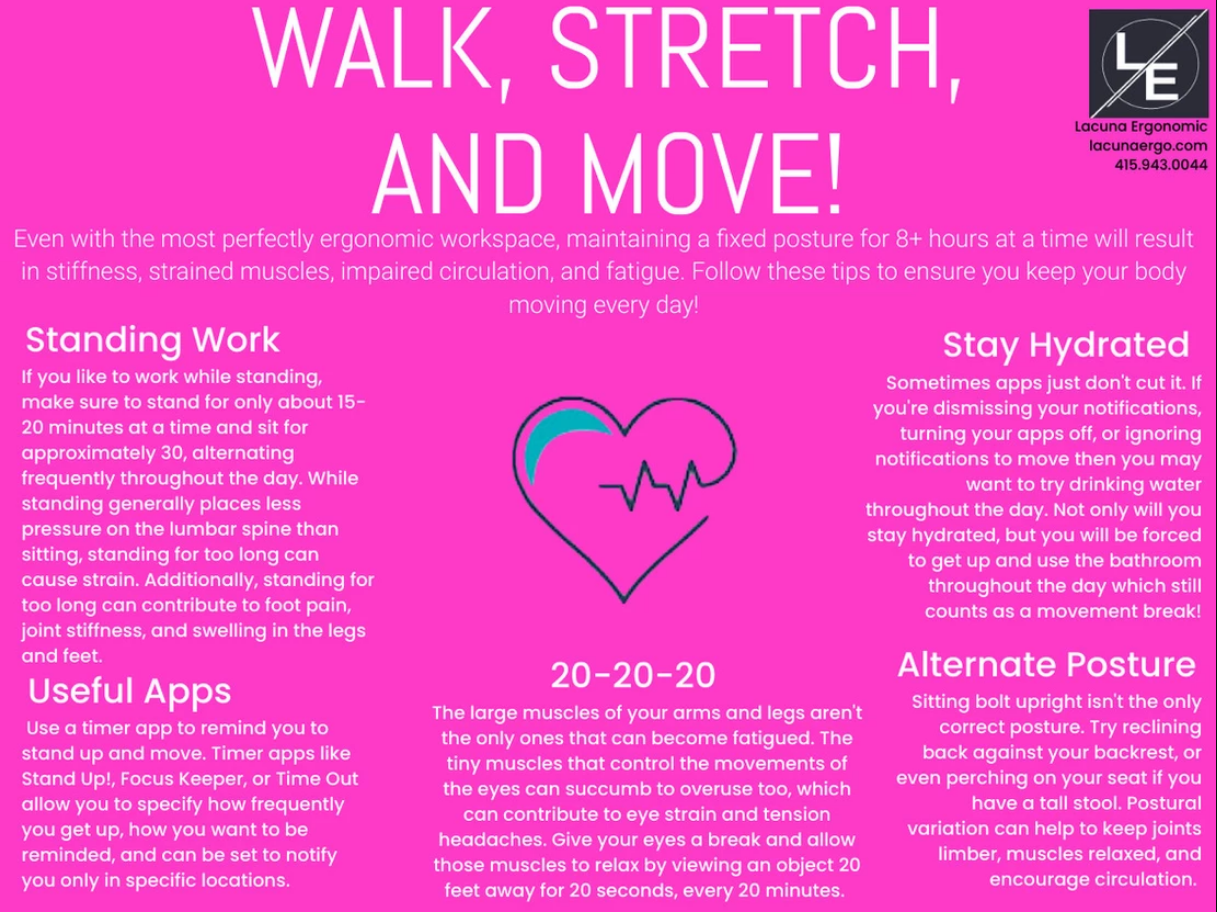Ergonomics Education - Walk, Stretch, and Move!

- Standing Work - If you like to work while standing, make sure to stand for only about 15-20 minutes at a time and sit for approximately 30, alternating frequently throughout the day. While standing generally places less pressure on the lumbar spine than sitting, standing for too long can cause strain. Additionally, standing for too long can contribute to foot pain, joint stiffness, and swelling in the legs and feet.
- Useful Apps - Use a timer app to remind you to stand up and move. Timer apps like STAND UP!, Focus Keeper, or Time Out allow you to specify how frequently you can up and how you want to be reminded, and can be set to notify you only in specific locations.
- 20-20-20 - The large muscles of your arms and legs aren't the only ones that can become fatigued. The tiny muscles that control the movements of the eyes can succumb to overuse too, which can contribute to eye strain and tension headaches. Give your eyes a break and allow those muscles to relax by viewing an object 20 feet away for 20 seconds, every 20 minutes.
- Stay Hydrated - Sometimes apps just don't cut it. If you're dismissing your notifications, turning your apps off, or ignoring notifications to move then you may want to try drinking water throughout the day. Not only will you stay hydrated, but you will be forced to get up and use the bathroom throughout the day which still counts as a movement break!
-
Alternate Posture - Sitting bolt upright isn't the only correct posture. Try reclining back against your backrest, or even perching on your seat if you have a tall stool. Postural variation can help to keep joints limber, muscles relaxed, and encourage circulation.
Graphic provided by Lacuna Ergonomic, our ergonomics partner